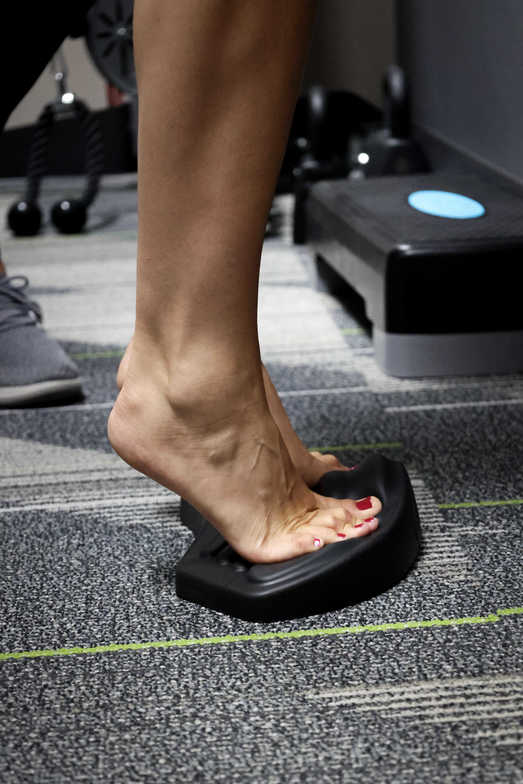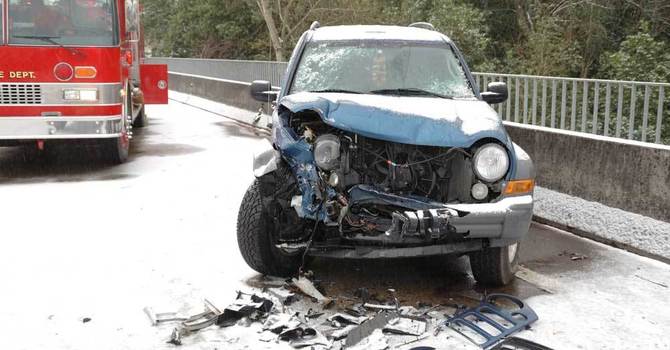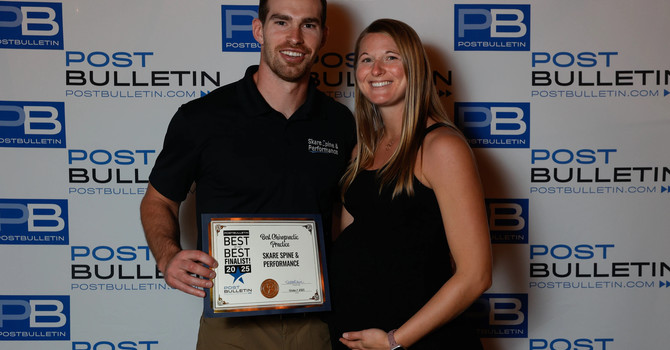
As the Rochester Hot Apple Cider Hustle, Turkey Trot, and other fall marathons kick into high gear, preventing and treating running injuries is paramount. Because of the demands you place on your body, navigating running injuries can be difficult.
In this blog, we'll delve into three prevalent running injuries – plantar fasciitis, shin splints, and Achilles tendinitis – exploring effective strategies to prevent and address these issues.
Plantar Fasciitis:
I’m sure you all know someone who has dealt with plantar fasciitis, and nearly 50% of people who have experienced it will still experience symptoms 15 years later. For runners, being proactive when treating this is essential as it is the most common cause of heel pain.
The plantar fascia is a strong band on the bottom of the foot that runs from the base of your big toe to the heel.
Plantar fasciitis can present with pain with your first few steps walking in the morning or can be one of those nagging conditions with heel pain with every step you take. Either way, we need to figure out the cause of it and provide appropriate treatment.
Contrary to common belief, arch height isn’t the culprit of plantar fasciitis; surprisingly, toe weakness and calf tightness are two of the biggest predictors.
The intrinsic muscles of the foot help pull your toes down during the gait cycle. If you have toe weakness, this can cause your toes to pull up too rapidly, causing strain on the plantar fascia. The foot's intrinsic muscles also help support the arch, thus the plantar fascia.
Both prevention and treatment strategies center around activating and strengthening the foot’s intrinsic muscles while also addressing calf tightness.
Our go-to tool, the Toe Pro, designed by Dr. Tom Michaud, targets the foot's intrinsic muscles and engages the Peroneals, a calf muscle linked to plantar fasciitis when weak.

Our favorite way to stretch the calves is with the Tri-Planar Calf Stretch (video link). This stretch helps target the calves in 3 planes of motion to help get all areas of the calf.
In the office, dry needling is another tool used to treat plantar fasciitis as it helps kickstart the healing process, especially in a chronic case.
Shin Splints:
Shin Splints are among the most common running injuries, with around 40% of high school runners experiencing them during a track and field season.
Shin Splints, also known as Medial Tibial Stress Syndrome, typically present with pain on the inside of your calf, 2-3 inches above your ankle.
Pain over your tibia's medial side (inside of your shin bone) is four to six times more likely than Achilles tendinitis and plantar fasciitis, making it essential to know how to prevent it!
Medial tibial stress syndrome essentially causes micro-stress fractures to the lower leg bone, which is why this injury can be complex and long-lasting.
Once shin splints appear, they can nag and are hard to eliminate, so it's important to take a proactive approach. If severe enough, shin splints can progress into a stress fracture, with rest being the only option.
While there is no singular cause for shin splints, it is often attributed to increasing running intensity or mileage too fast. This injury is often known as “too far, too fast, too soon,” making it imperative to have your running on ramping mapped out. Calf weakness should also be addressed in working to help prevent shin splints.
Here’s how we treat shin splints:
- Soft-Tissue Release – we use fascial manipulation and muscle release techniques to help loosen up the calf musculature.
- Calf Strengthening – using the Toe Pro and DNS foot activation to help support the calf musculature.
- Calf Stretching – we use the Tri-Planar calf stretch to restore normal motion to the calf muscles.
- KT tapping can help increase proprioception and support the calf.
- Dietary Considerations - Addressing dietary factors like Vitamin D, magnesium, calcium, and protein intake to improve healing, especially since there is often trauma to the bone.
Achilles Tendinitis:
The Achilles tendon has had a lot of attention lately (thanks to Aaron Rodgers). The Achilles tendon is one of the most important structures in the body as it is incredibly strong, supporting up to 8 times our body weight during movement. It acts as a spring storing and returning energy required for efficient and explosive movement.
Given the force and strain placed on it, the Achilles tendon is susceptible to overuse injuries. Additionally, the Achilles tendon becomes increasingly weaker as we age, making it an area commonly injured.
Two common injuries include tendonitis, signifying acute inflammation due to overuse, and tendinopathy, denoting tendon degeneration from prolonged stress.
Tendinopathy can be more challenging to treat as tendons take longer to heal and develop the strength and specific collagen fibers needed to withstand high forces.
Like the two conditions above, addressing calf tightness and ensuring that the calf and intrinsic foot muscles are strong are important measures.
In cases of Achilles tendonitis, prompt treatment to alleviate inflammation often resolves quickly.
Conversely, if it progresses to tendinopathy and there is more degeneration, we need to build back strength and resiliency to the tendon.
This often includes eccentric calf raises (video link) that target specific areas of the Achilles tendon to help stimulate healing. Starting with 3 sets of 15 reps daily, we progressively adjust weight and reps.
Once again, dry needling can be an effective tool to help stimulate tendon healing with Achilles tendinopathy.
Summing it up:
As you probably noticed, most lower extremity injuries revolve around calf tightness, proper strength, and activation of the intrinsic foot and calf musculature.
Any injuries, especially to those who place high demands on their body, are frustrating. Give these exercises and stretches a try, and if you are dealing with any injury, please reach out to us; we’d be happy to answer any questions.
At Skare Spine and Performance, we perform thorough assessments to pinpoint where pain or injury is coming from, which allows us to provide personalized care and treatment plans that keep you in the game and elevate your performance.

Nate Skare
Contact Me



